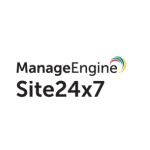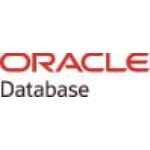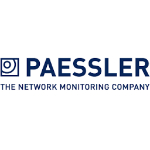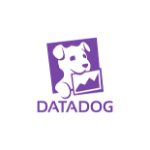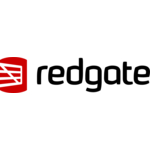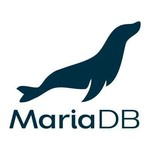
TechnologyCounter provides genuine, unbiased real user reviews to help buyers make informed decisions. We may earn a referral fee when you purchase through our links, at no extra cost to you.
List of 15 Best Database Monitoring Tools
Showing 1 - 15 of 24 products
ManageEngine Applications Manager
Can handle 50,000 applications at a time
Upgrade your application processing system by utilizing the dynamic and efficient application monitoring software, ManageEngine Applications Manager, which eliminates manual tasks such as application upload, information verification, and service del...Read ManageEngine Applications Manager Reviews
ManageEngine Site24x7 is a SaaS-based, AI-powered observability platform for DevOps and IT operations. The cloud-based platform’s broad capabilities help predict, analyze, and troubleshoot problems with end-user experience, applications, microservi...Read ManageEngine Site24x7 Reviews
AppsTec DMS, a powerful document management system designed to revolutionize the way businesses handle their digital assets. With its user-friendly interface features, AppsTec DMS streamlines the process of organizing, storing, and sharing documents,...Read AppsTec DMS Reviews
Oracle Database an innovative database management system that serves as the foundation of many modern businesses. With its robust features technology, it helps organizations store, manage, and retrieve data efficiently, empowering them to make data-d...Read Oracle Database Reviews
Percona Database is a open-source database management system designed for high-performance and scalability. It offers advanced features and tools for efficient management of large datasets. With its reliable and robust architecture, Percona Database...Read Percona Database Reviews
dbForge Edge is a versatile and powerful software that empowers database developers and administrators to easily manage and optimize their databases. With a user-friendly interface and a wide range of features, dbForge Edge streamlines database manag...Read dbForge Edge Reviews
Entity Developer is an all-in-one solution for easily designing and implementing database entities. This powerful software streamlines the development process with its intuitive interface features, making it the top choice for developers of all level...Read Entity Developer Reviews
Paessler PRTG is an innovative network monitoring solution designed to provide comprehensive insights into the performance and availability of IT infrastructure. With its user-friendly interface features, Paessler PRTG simplifies network management,...Read Paessler PRTG Reviews
Datadog APM is a tool designed to help businesses monitor and optimize their application performance. With its advanced features and user-friendly interface, Datadog APM makes it easy for companies to gain valuable insights into their application hea...Read Datadog APM Reviews
DataStax Enterprise is a software platform designed to help businesses harness the full potential of their data. With advanced features, real-time analytics, and seamless integration, DataStax Enterprise empowers organizations to make intelligent dat...Read DataStax Enterprise Reviews
SQL Monitor, a powerful tool designed for monitoring and optimizing the performance of your SQL databases. With real-time insights and customizable alerts, SQL Monitor helps you identify and resolve issues before they impact your business. Stay in co...Read SQL Monitor Reviews
Instrumental is a Tool for Music Creation and Production. Designed for musicians, producers, and composers, Instrumental is the go-to software for all your music needs. With a user-friendly interface and a wide range of features, it allows you to bri...Read Instrumental Reviews
Sensu is a and dynamic monitoring platform designed for modern digital infrastructure. With its innovative approach and robust capabilities, Sensu helps organizations monitor and manage their complex systems with ease and efficiency. With its user-fr...Read Sensu Reviews
MariaDB is a open-source database management system that has been gaining popularity among businesses and organizations. With its roots in MySQL, it offers a seamless transition and an array of advanced features. Its ease of use, scalability, and sec...Read MariaDB Reviews
- What Is Database Monitoring Tools?
- Top Reasons Why Businesses Need Database Monitoring Tools?
- What Are the Top Key Features of Database Monitoring Tools?
- What Are the Top Benefits of Database Monitoring Tools?
- What Are the Steps to Choose the Right Database Monitoring Tools?
- What Are the Types of Database Monitoring Tools for Different Industries?
- What Are the Technology Trends for Best Database Monitoring Tools?
- What Are the Deployment Options for Database Monitoring Tools?
What Is Database Monitoring Tools?
Database monitoring tools are software programmes that are used to examine a database's performance and detect any problems or prospective areas for development. This includes keeping track of how much system memory, disc space, and other resources are being used, as well as ensuring that the database is working at peak performance.
Database monitoring tools can also be used to analyse the performance of two or more databases to find potential performance concerns. These tools search for database issues such as erroneous database table definitions, missing index files, and unreferenced data items.
A database monitoring system is critical for preventing data corruption and identifying any security risks. Database monitoring software can also provide automatic alerts when particular thresholds, such as disc or memory utilization, are surpassed. These notifications can assist administrators in making informed decisions about how to best maintain their databases.
For example, they may decide to reduce the size of their database or increase the amount of available memory and disc space to boost performance. Organizations can use best database monitoring software to ensure that their databases are working efficiently and securely, while also making any necessary adjustments to address any discovered issues.
Database monitoring system contributes to organizations getting the most out of their datasets.
Top Reasons Why Businesses Need Database Monitoring Tools?
1) The best database monitoring software allows for the proactive identification of potential issues and the reduction of downtime.
2) They enable effective database performance tracking as well as secure access to corporate networks.
3) Database monitoring solutions notify administrators in real time if any performance threshold is exceeded, allowing the database to be corrected before major interruption occurs.
4) They allow DBAs to detect and prevent network anomalies and security breaches.
5) Database monitoring tools provide detailed insight into database resource utilisation, allowing for resource resizing and pruning as needed.
6) They help to increase performance by detecting long-running queries and query plan deviations.
7) Database monitoring software Keep track of the database's operational log and error reports for quick troubleshooting.
8) They enable SQL query optimisation and save time by removing manual processes such as query tweaking.
9) Database monitoring systems perform hourly and daily health checks on the system, enabling for early detection of any deviation from the norm.
10) They allow batch jobs and automated maintenance chores to be scheduled, lowering overhead expenses.
11) They offer simple-to-read statistics and graphs that enable instant access to performance data and trends.
12) The best database monitoring software detects potential deadlocks when numerous users attempt to access the same data at the same time.
13) They provide effective performance monitoring during both development and production.
14) When modifications are required, database monitoring tools can make vertical and horizontal scaling easier.
15) They forecast future database usage and requirements, laying the groundwork for future adjustments to system architecture.
What Are the Top Key Features of Database Monitoring Tools?
1. Performance Monitoring: Database monitoring solutions allow administrators to track metrics including query times, latency, memory and disc utilization, and more.
2. Server Consolidation: Database monitoring software enables managers to consolidate many server instances, lowering hardware and software costs.
3. Automated Backup: Best Database monitoring tools can be programmed to produce and maintain backups of databases automatically, thereby ensuring data integrity in the event of a disaster.
4. Scalability: Database monitoring tools can be used to scale databases to handle increased load or the addition of new applications.
5. Security Monitoring: Best database monitoring software administrators to promptly notice and respond to harmful behavior and security breaches.
6. Capacity Planning: Database monitoring tools give the data required to estimate and plan for future database growth.
7. Problem Diagnosis: Database monitoring tools can assist in determining and tracking down the source of errors and performance issues.
8. Alerting: Database monitoring systems can be set up to deliver warnings depending on predetermined thresholds, allowing administrators to address issues as they arise.
9. Cloud-Readiness: Best database monitoring software can be deployed in cloud-hosted settings, allowing administrators to monitor their database infrastructure no matter where it resides.
10. Granular Data Analysis: The Best database monitoring tools give sophisticated drill-down features that enable administrators to acquire a deeper understanding of their database environment.
What Are the Top Benefits of Database Monitoring Tools?
1. Improved performance: Administrators can use database monitoring tools to analyse resource utilisation, detect unproductive queries, and determine what modifications are required to improve performance.
2. Increased uptime: Database monitoring technologies can detect possible downtime and take necessary action automatically.
3. Enhanced security: Database monitoring tools detect and notify administrators of any suspicious activity or unauthorised access.
4. Improved cost savings: Top database monitoring tools can assist administrators identify resource utilisation trends, allowing them to optimise hardware and software resources and save money.
5. Increased data quality: Database monitoring software can detect and notify any quality concerns that may arise during data entry, transfer, or manipulation, such as duplicate records.
6. Increased scalability: Database monitoring tools can assist in scaling up programmes to meet rising demand without jeopardising system stability.
7. Enhanced troubleshooting: The best database monitoring tools enable administrators to swiftly diagnose and resolve database issues.
What Are the Steps to Choose the Right Database Monitoring Tools?
1. Assess the requirements: To begin, assess the project's system requirements, such as the type of data that must be collected, the number of databases that must be monitored, and other features.
2. Consider the platform: Determine whether the database monitoring tools must run on Windows, Unix, or another operating system.
3. Research the right tools: Examine survey findings and user reviews to identify and select the best tools for the project's specific needs.
4. Check cost and features: Compare the costs and features of several top database monitoring tools to find the best fit.
5. Testing the tool: Test the chosen database monitoring tool to check that it will meet the project's needs.
6. Set up and documentation: Configure and document the software installation and integration procedure.
7. Monitor and maintain: Maintain the database monitoring tools and monitor the system's performance.
What Are the Types of Database Monitoring Tools for Different Industries?
There are several types of database monitoring tools available for different industries, including:
1. Security: Tools for monitoring database activity, such as IDERA SecureBridge, detect suspicious behaviour, restrict malicious communication, and guard against security concerns.
2. Auditing: SentryOne and other database auditing technologies enable organisations to identify, examine, and analyse any abnormalities or changes in the database environment.
3. Performance: Database performance monitoring technologies, such as Quest Foglight database monitoring, provide information about the health and performance of a database.
4. Availability: Database availability monitoring tools, such as Datadog's free tool, track uptime and notify you as soon as something goes wrong.
5. Capacity Planning: Database capacity planning solutions, such as SolarWinds Database Performance Analyzer, assist organisations in proactively optimising their databases to suit their business needs.
What Are the Technology Trends for Best Database Monitoring Tools?
The best database monitoring tools and technology advancements are related to enhanced automation, remote accessibility, scalability, resource optimisation, and extensibility. Automation reduces human error while increasing efficiency. Automated top database monitoring tools can assist detect and fix problems promptly and prevent them from recurring.
Remote database access is becoming increasingly crucial as businesses strive to expand their products to clients all over the world. A centralised monitoring capability allows organisations to effectively manage and monitor databases from remote locations while also responding swiftly to any possible issues. Scalability is critical as organisations and their databases grow.
Database monitoring systems should be able to adapt to changing data volumes and increased user traffic. Resource optimisation is required to ensure that the least amount of resources are used to get the most out of the system.
The best Database monitoring tools that examine queries, index usage, transactions, and performance data might assist in identifying methods to streamline code and improve efficiency. Finally, as organisations increasingly use cloud-based technology, extensibility is critical.
Open source database monitoring tools that interface with other solutions make it easy to expand and diversify an organization's database capabilities.
What Are the Deployment Options for Database Monitoring Tools?
The deployment choices for top database monitoring tools will vary depending on the instrument. These tools, in general, can be implemented through a cloud-based solution, installed on a distant server, or as a desktop program.
Cloud-based solutions are ideal for database monitoring since they are hosted off-site and offer the most flexibility.
Remote servers enable the tool to run on a separate system with convenient web access, and desktop apps can be utilized when on-site monitoring is required.
